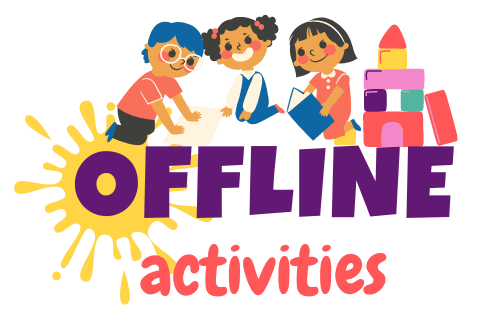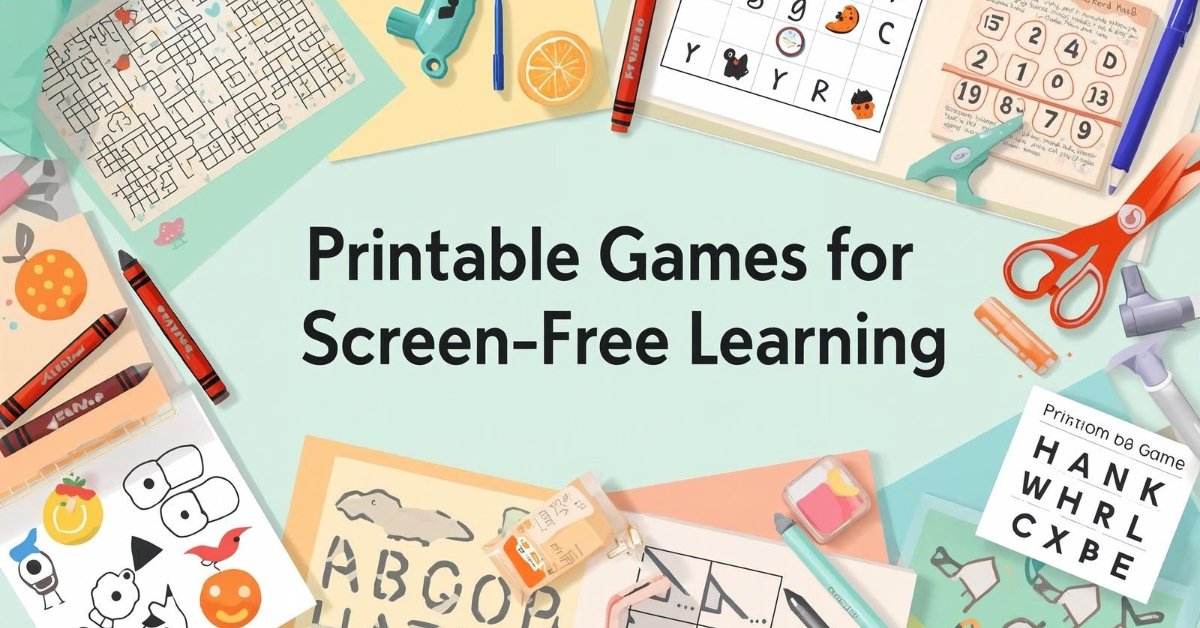In today’s digital world, screens are everywhere—from classrooms to living rooms. While technology has many advantages, excessive screen time can lead to fatigue, short attention spans, and reduced creativity in children. That’s why printable games are making a powerful comeback.
These hands-on, screen-free activities don’t just entertain; they nurture problem-solving, social, and cognitive skills that digital play often overlooks. Whether you’re a teacher seeking creative classroom tools or a parent hoping to inspire focus and fun at home, printable games offer an engaging solution for meaningful learning.
✨ Quick Take: Why Printable Games Work
Printable games combine education with imagination—a balance kids need most.
They help children:
-
Build focus and patience through tactile play.
-
Strengthen problem-solving and collaboration.
-
Express creativity and independence.
-
Learn naturally—without digital distractions.
🧠 The Educational Power of Printable Games
1. Promotes Problem-Solving Skills
Every puzzle, board, or scavenger hunt challenges kids to think critically. Printable games engage children in analyzing, comparing, and finding creative solutions—essential skills for both school and life.
2. Encourages Independent Learning
Printable games can be enjoyed solo, helping children take control of their learning. Completing a crossword or maze alone builds self-confidence and persistence.
3. Strengthens Language and Math Development
Word searches, crosswords, and flashcards help expand vocabulary and reinforce reading and math skills in a fun, memorable way.
4. Supports Physical & Cognitive Growth
Cutting, coloring, or arranging pieces develops fine motor coordination while strengthening focus and hand-eye connection.
🎯 Why Hands-On Learning Beats Screen Time
| Learning Type | Focus & Retention | Creativity | Motor Skills | Emotional Regulation |
|---|---|---|---|---|
| Screen-Based | Short-term | Limited | Minimal | Low |
| Printable, Hands-On Play | Long-term | High | Strong | Calming |
Studies show that hands-on learners retain up to 75% more information than passive screen viewers. Printable activities transform abstract lessons into tangible experiences—helping kids truly understand what they learn.
🪄 Types of Printable Games That Inspire Learning
🧩 Educational Worksheets
From alphabet tracing to beginner math puzzles, these sheets turn lessons into joyful challenges that can be customized by age or topic.
🎲 Printable Board Games
Home-printed board games build teamwork and patience. Use themes your child loves—animals, holidays, or fairy tales—to make learning irresistible.
💡 Flashcard Games
Turn memorization into a game! Printable flashcards are perfect for vocabulary, sight words, or math facts.
🕵️ Scavenger Hunts
Encourage exploration indoors or outdoors. Scavenger hunts foster curiosity, logical thinking, and physical activity—all essential for early learners.
👩🏫 Real-Life Insight: From Screen Fatigue to Active Focus
“In my kindergarten classroom,” says Ms. Lopez, a teacher from Toronto,
“I replaced iPad time with printable games twice a week. Within two weeks, students were calmer, more cooperative, and surprisingly more creative during playtime.”
Hands-on games slow children down—in the best way possible. They help them reconnect with focus, tactile exploration, and authentic joy.
💬 How to Incorporate Printable Games into Daily Routines
🏡 1. Family Game Nights
Dedicate one evening each week to screen-free games. Print a new puzzle or board game and make it a tradition everyone looks forward to.
🎓 2. Learning Stations at Home
Set up mini “learning corners” where kids can pick from math mazes, alphabet searches, or craft-based challenges.
🎁 3. Rewards That Teach
Instead of digital rewards, give children extra playtime with a new printable pack when they finish homework—it’s both motivating and educational.
📚 Skill Development Through Play
| Skill Area | Example Activity | Learning Outcome |
|---|---|---|
| Cognitive Thinking | Crosswords & Sudoku | Logical reasoning, memory |
| Language Skills | Word Search | Vocabulary, reading fluency |
| Fine Motor | Cutting & Coloring Games | Coordination, precision |
| Social Development | Group Board Games | Teamwork, communication |
Each printable activity reinforces core educational goals while making learning enjoyable and personalized.
🤖 FAQ: Parents’ Common Questions
1. What age group are printable games best for?
Ages 3–8 are ideal, but many can be adapted for older children.
2. How do I make printable games more engaging?
Let kids decorate or color their game pieces—it boosts ownership and excitement.
3. Can these be used in classrooms?
Absolutely! Teachers use them for centers, group work, and homework reinforcement.
4. Do printable games replace digital tools?
Not entirely—but they provide a much-needed balance and reduce overexposure to screens.
5. What skills do printable puzzles build?
Focus, patience, logic, and perseverance—all while promoting fun!
6. How often should children play these games?
Even 15–30 minutes a day of screen-free gaming has measurable cognitive benefits.
🌟 Conclusion: Learning That Stays for Life
Printable games do more than fill time—they create memories, strengthen family bonds, and lay the foundation for lifelong curiosity.
By bringing back the joy of touch, creation, and imagination, parents and teachers can transform how children learn—one printable at a time.
Try this activity today and see your child’s confidence bloom — no screens required.
YOU MAY ALSO LIKE
Word Find Free- First-Grade Friends
Word Search Free Games- First-Grade Friends
Free Game of Word Search- Spelling Words

